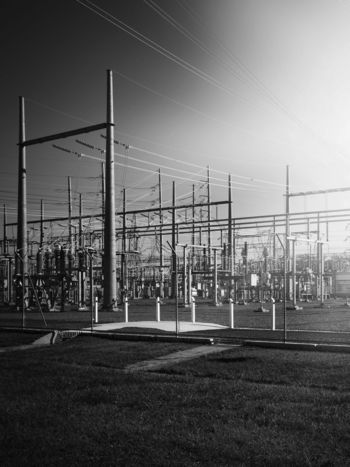Methods for Specification of Functional Requirements of Protection, Automation and Control
Protection, Automation, and Control systems for the power industry are currently developed following a well-defined engineering process. Many international standards and proprietary methods are available to this process, using advanced tools to support their development. Despite this status, a recent survey conducted by CIGRE Task Force TF B5.02 identified a lack of support of advanced methods for the primary user to specify the functional requirements for these systems, requiring the knowledge of technologies used for their implementation. This is particularly difficult considering the highly specialized knowledge needed to develop systems based on IEC 61850 and other PAC standards.
Members
Convenor (BR)
I.P. SIQUEIRA
Secretary (BR)
L. CALMON
A. APOSTOLOV (US), B. ANDRÉ (FR), C. RODRIGUEZ (SP), N.K. NAIR (NZ), P. MYRDA (US), P. ZHANG (US), S. HU (CN), S. HUSSEY (IE), S. BLAIR (UK), T. CHARTON (UK), V. LEITLOFF (FR)
Corresponding Members
A. ADEWOLE (ZA), A.I. BRITO (PT), D. ESPINOSA (MX), M. EGYDIO (BR), M. VALENTE (IT), N. FAAROOQUI (NZ), R. DAS (US), R. DIAS PAULO (PT), R. KEATING (IE), T. BUSYGIN (RU), L. UYTTERSPROT (BE), Y. KODALI (IN), Z.MENG (CN)
Objectives
Historically, the process of functional requirement specification of PAC system has consisted mainly of a natural language description of a set of design requirements, optionally followed by some table or graphic pictures. This format is both ambiguous and unverifiable by a computer, requiring manual human checking and compilation to a target technology.
The objective of this brochure is to propose a Domain Specific Language for specifying functional requirements of PAC systems. Programs written in this language constitute technology/implementation-independent functional requirements. Using formal syntax and precise semantics, a user can describe the structure and desired logic of the system, without delving into the technological details of its implementation. Complex temporal logic can be described using simple linguistic constructs close to the natural language used by PAC users. When compared to conventional (procedural) languages, programs or specifications written in a (non-procedural) DSL are more concise, can be written more quickly, are easier to maintain and are easier to reason about, and most important, can often be written by non-programmers. The mechanisms through which the compilation of requirements to target technologies is performed is left to the supplier, integrator, or manufacturer of the system, using standard compiler technologies and their proprietary building modules.
Introduction
The Introduction chapter describes the motivation for this brochure, and the questionary used by CIGRE WG B5.64 to collect the opinion of utility, academics, consultants, and manufacturers about their needs. The report generated by this survey, published by CIGRE Science & Engineering journal (CSE) summarizes the main findings of this investigation, chiefly the lack of support of advanced formal methods for the primary user to specify the functional requirements for these systems, and the need for a formal Domain-Specific Language for this purpose.
A total of 135 experts in 97 companies from 42 countries participated in this survey and shared their views and experiences. The questionary addressed the main standards used by PAC experts to specify and implement PAC systems, such as IEC 61850, IEC 61499, IEC 61131, IEC 13568, UML and SysML. Additionally, the questionary asked the view of the respondents about the use of Natural Language (NL) and Controlled Natural Language (CNL) as possible alternatives for functional specifications of requirements for PAC systems. The associated tools were also included in the survey to avail the respondent’s preference and practices. The following general conclusions were derived from the survey:
- IEC 61850 is the de-facto standard for designing PAC systems for the power industry.
- Any new Requirement Language should be integrated to IEC 61850.
- Any Requirement Language should be easily readable by humans and computers, like Natural Language (NL) or Controlled Natural Language (CNL); this precludes specifically any language based on XML.
- The Requirement Language should be understandable by non-expert users. Again, this favor Controlled and Natural Languages (NL or CNL).
- The Requirement Language should be formal and automatically translatable (by a compiler) to standardized design languages like IEC 61850, IEC 61131, IEC 61499, or IEC 13568.
The survey further concluded that the language should use a vocabulary and grammar close to the way a user expresses the desired functionality of a PAC system, while being easy to learn and independent of the implementation technology. Specifically, it should also use formal syntax and semantics to allow unambiguous definitions and computer-aided processing and be easily integrated to the common standard used by the industry for the Engineering Cycle of PAC systems.
Engineering Cycle
The chapter about Engineering Cycle reviews the engineering process of designing a PAC system, and the needs of a DSL for the functional requirement...




